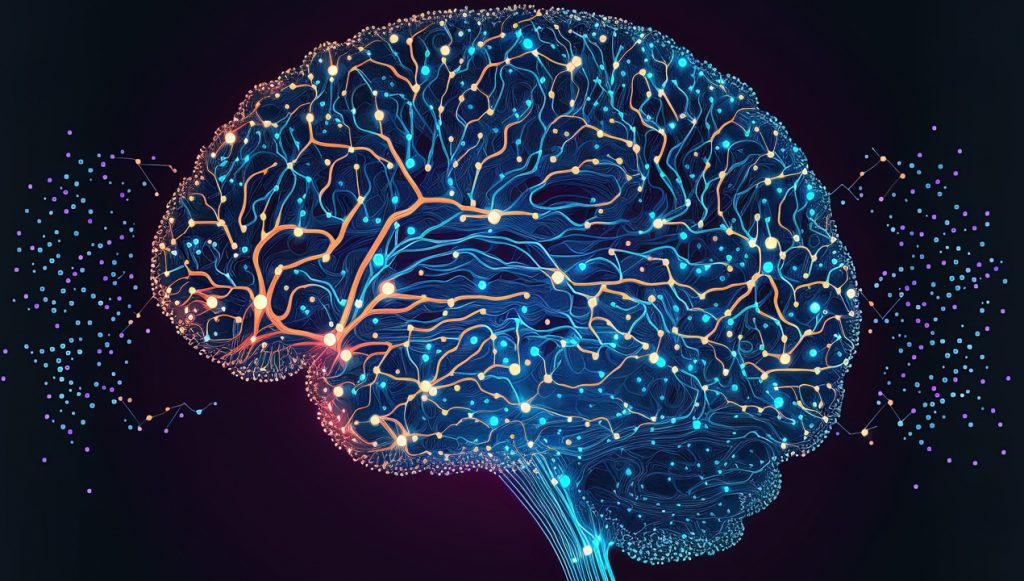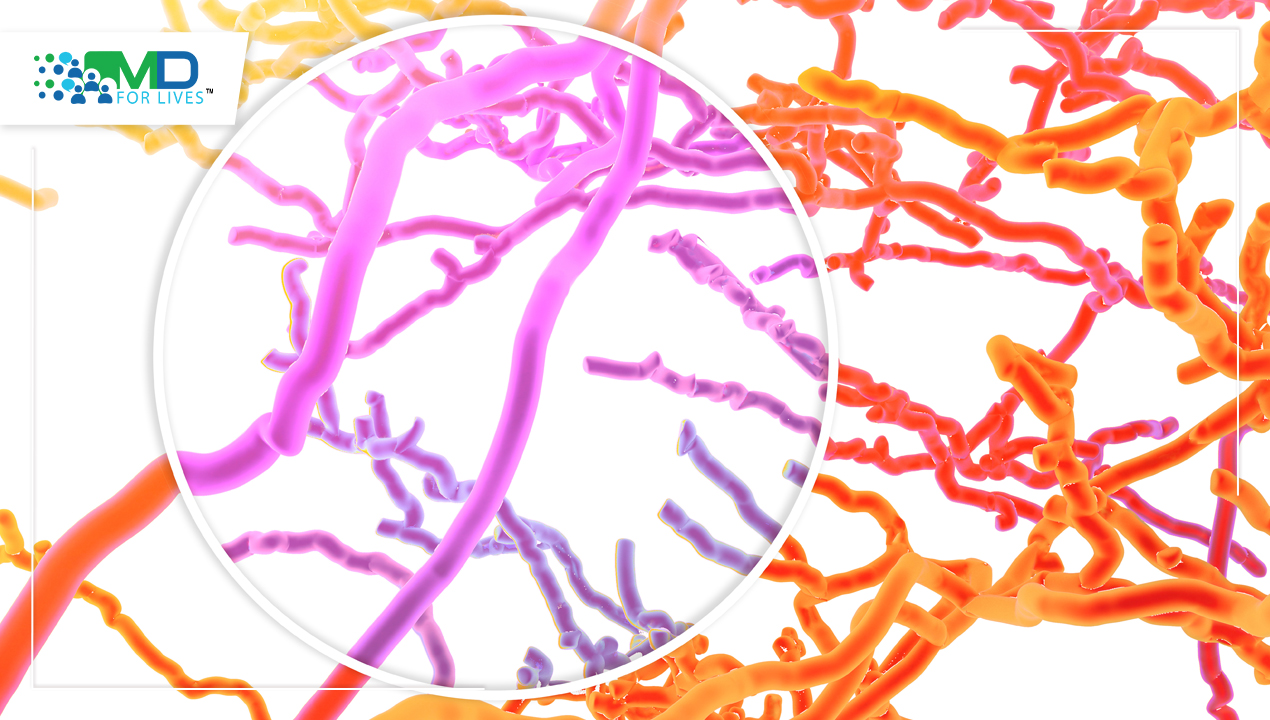The complexity and functionality of the human brain have been the subject of study for centuries. However, there is still so much to learn about the brains of other animals, particularly insects. Recently, a team of scientists has completed the first-ever map of an insect brain, providing new insights into the neural architecture and behavior of these fascinating creatures. Researchers have created the first-ever map of the wiring patterns of every neuron in the fruit fly larval brain. They used high-resolution electron microscopy to create the first complete connectome of an insect brain. This is the most comprehensively mapped connectome of the brain to date.
The team studied the brain of the fruit fly, Drosophila melanogaster, which is a common model organism in neuroscience research. A diagram tracing every neural connection in the brain of a larval fruit fly, a classic scientific model with brains comparable to humans, was created.
The connectome is a map of the connections between neurons in the brain. It provides a detailed understanding of the neural architecture of the brain and is crucial for understanding how the brain processes information and controls behavior.

Similarities between Human and Drosophila larvae brain
Although the human brain and the brain of Drosophila larvae are very different in terms of size and complexity, there are some similarities between them that have been discovered through research.
One similarity is the presence of certain neurotransmitters and signaling pathways that are involved in both human and Drosophila larvae brain function. For example, serotonin is a neurotransmitter that is involved in regulating mood and behavior in humans, and it has been shown to play a similar role in the behavior of Drosophila larvae.
Another similarity is the presence of certain types of neurons and neural circuits that are involved in both human and Drosophila larvae brain function. For example, the neural circuits that control feeding behavior have been found to be similar in both humans and Drosophila larvae.
Furthermore, both human and Drosophila larvae brains exhibit plasticity, which means they can change and adapt in response to experience and environmental factors. For example, exposure to certain stimuli can cause changes in neural connectivity and behavior in both humans and Drosophila larvae.
While there are some similarities between human and Drosophila larvae brains, it is important to note that they are also vastly different in terms of size, complexity, and function. The human brain is much larger and more complex, with a wider range of functions and abilities. Nonetheless, studying the similarities and differences between the two can help us better understand the basic principles of brain function and evolution.
Experimental Study:
Fruit fly larvae share homologous brain structures with adult Drosophila and larger insects and exhibit a diverse range of behaviors, including learning, value computation, and action selection.

The Drosophila larval brain’s complete synaptic-resolution connectome consists of 3016 neurons and 548,000 synapses. A detailed examination of the brain circuit architecture, including connection and neuron types, network hubs, and circuit motifs, was performed. The majority (73%) of the brain’s in-out hubs were either postsynaptic to the learning center or presynaptic to the dopaminergic neurons that drive learning.
The team used thousands of slices of the fruit fly larva’s brain, which were imaged with a high-resolution electron microscope to reconstruct a map of the fly’s brain and painstakingly annotated the connections between neurons in order to create a picture of the connectome. They not only mapped the 3016 neurons but also an astounding 548,000 synapses. Additionally, the researchers created computational tools to recognize various kinds of circuit patterns and potential information flow pathways in the insect’s brain. They discovered that some of the structural characteristics resemble modern deep learning architecture.
In a report published in the journal Science on March 9th, researchers discovered networks that allow neurons on one side of the brain to communicate with neurons on the other. The group also identified 93 different types of neurons, each of which has a unique shape, assumed purpose, and network of connections to other neurons.
Scientists were surprised by the final map in a number of ways.
For instance, scientists frequently imagine neurons as having long, straight wires called axons that carry messages outward, and shorter, branched wires called dendrites that carry messages inward. There are, however, exceptions to this rule, and it turns out that in the larval fly brain, axon-to-axon, dendrite-to-dendrite, and dendrite-to-axon connections account for about one-third of the synapses.
The connectome was also unexpectedly “shallow,” which means that very few neurons process incoming sensory information before it is passed to a motor control neuron, which can instruct the fly to carry out a physical behavior. The brain has built-in “shortcuts” between circuits that somewhat resemble those in cutting-edge AI systems to achieve this level of efficiency.
Although the study has a limitation: it does not identify which neurons are excitatory, which means they cause other neurons to fire, or inhibitory, which means they cause neurons to fire less frequently; however, the discovered brain architecture serves as a foundation for upcoming theoretical and experimental research on neural circuits.
In conclusion, the recent discovery of the connectome of an insect brain is a significant breakthrough in the field of neuroscience. It provides new insights into the complex neural architecture of these tiny creatures and could have implications for our understanding of the brains of other animals. This research could also lead to the development of new technologies that could have a wide range of applications.
References:
- Scientists complete first map of an insect brain. Science daily. https://www.sciencedaily.com/releases/2023/03/230309164711.htm. Accessed 3.13.2023
- 1st complete map of an insect’s brain contains 3,016 neurons. LIVESCIENCE. https://www.livescience.com/1st-complete-map-of-an-insects-brain-contains-3016-neurons. Accessed 3.13.2023
- First wearing map of insect brain complete. Research. https://www.cam.ac.uk/research/news/first-wiring-map-of-insect-brain-complete#:~:text=Information%20in%20the%20form%20of,known%20as%20a%20’connectome‘. Accessed 3.13.2023
- The connectome of an insect brain. Science. https://www.science.org/doi/10.1126/science.add9330. Accessed 3.13.2023

MDForLives is a vibrant community of healthcare professionals and patients dedicated to shaping the future of healthcare. We provide valuable global insights to healthcare companies through online surveys, interviews, and discussion forums.






